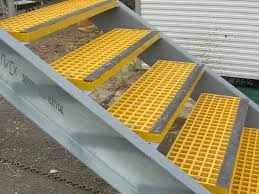
-
 Afrikaans
Afrikaans -
 Albanian
Albanian -
 Amharic
Amharic -
 Arabic
Arabic -
 Armenian
Armenian -
 Azerbaijani
Azerbaijani -
 Basque
Basque -
 Belarusian
Belarusian -
 Bengali
Bengali -
 Bosnian
Bosnian -
 Bulgarian
Bulgarian -
 Catalan
Catalan -
 Cebuano
Cebuano -
 China
China -
 China (Taiwan)
China (Taiwan) -
 Corsican
Corsican -
 Croatian
Croatian -
 Czech
Czech -
 Danish
Danish -
 Dutch
Dutch -
 English
English -
 Esperanto
Esperanto -
 Estonian
Estonian -
 Finnish
Finnish -
 French
French -
 Frisian
Frisian -
 Galician
Galician -
 Georgian
Georgian -
 German
German -
 Greek
Greek -
 Gujarati
Gujarati -
 Haitian Creole
Haitian Creole -
 hausa
hausa -
 hawaiian
hawaiian -
 Hebrew
Hebrew -
 Hindi
Hindi -
 Miao
Miao -
 Hungarian
Hungarian -
 Icelandic
Icelandic -
 igbo
igbo -
 Indonesian
Indonesian -
 irish
irish -
 Italian
Italian -
 Japanese
Japanese -
 Javanese
Javanese -
 Kannada
Kannada -
 kazakh
kazakh -
 Khmer
Khmer -
 Rwandese
Rwandese -
 Korean
Korean -
 Kurdish
Kurdish -
 Kyrgyz
Kyrgyz -
 Lao
Lao -
 Latin
Latin -
 Latvian
Latvian -
 Lithuanian
Lithuanian -
 Luxembourgish
Luxembourgish -
 Macedonian
Macedonian -
 Malgashi
Malgashi -
 Malay
Malay -
 Malayalam
Malayalam -
 Maltese
Maltese -
 Maori
Maori -
 Marathi
Marathi -
 Mongolian
Mongolian -
 Myanmar
Myanmar -
 Nepali
Nepali -
 Norwegian
Norwegian -
 Norwegian
Norwegian -
 Occitan
Occitan -
 Pashto
Pashto -
 Persian
Persian -
 Polish
Polish -
 Portuguese
Portuguese -
 Punjabi
Punjabi -
 Romanian
Romanian -
 Russian
Russian -
 Samoan
Samoan -
 Scottish Gaelic
Scottish Gaelic -
 Serbian
Serbian -
 Sesotho
Sesotho -
 Shona
Shona -
 Sindhi
Sindhi -
 Sinhala
Sinhala -
 Slovak
Slovak -
 Slovenian
Slovenian -
 Somali
Somali -
 Spanish
Spanish -
 Sundanese
Sundanese -
 Swahili
Swahili -
 Swedish
Swedish -
 Tagalog
Tagalog -
 Tajik
Tajik -
 Tamil
Tamil -
 Tatar
Tatar -
 Telugu
Telugu -
 Thai
Thai -
 Turkish
Turkish -
 Turkmen
Turkmen -
 Ukrainian
Ukrainian -
 Urdu
Urdu -
 Uighur
Uighur -
 Uzbek
Uzbek -
 Vietnamese
Vietnamese -
 Welsh
Welsh -
 Bantu
Bantu -
 Yiddish
Yiddish -
 Yoruba
Yoruba -
 Zulu
Zulu
Exploring the Advantages of Using FRP Materials for Boat Hull Construction and Design
The Evolution and Advantages of FRP Boat Bodies
The maritime industry has continually embraced innovation, seeking materials that enhance performance, durability, and environmental compatibility. One of the most significant advancements in recent years is the use of Fiber Reinforced Plastic (FRP) in boat construction. FRP boat bodies represent a transformative approach to vessel design and manufacturing, offering numerous benefits over traditional materials like wood, aluminum, and steel.
Understanding FRP
Fiber Reinforced Plastic is a composite material made from a polymer matrix reinforced with fibers, typically glass or carbon. This combination results in a strong yet lightweight structure, ideal for marine applications. The development of FRP has opened new avenues for boat design, allowing for more complex shapes and enhanced performance characteristics.
Benefits of FRP Boat Bodies
1. Lightweight and Strength One of the most significant advantages of FRP is its impressive strength-to-weight ratio. Boats constructed with FRP are lighter than those built using traditional materials. This reduction in weight translates to better fuel efficiency and higher speeds, making them particularly appealing for both recreational and commercial users.
2. Corrosion Resistance Unlike wood, which can rot, or metal, which can corrode, FRP is highly resistant to environmental factors. This resistance to water, salt, and UV rays significantly extends the lifespan of the boat, reducing maintenance costs and enhancing overall durability.
3. Flexibility in Design FRP allows for greater design flexibility, enabling engineers and designers to create boats that are not only functional but also aesthetically pleasing. The material can be easily molded into complex shapes, resulting in innovative designs that improve hydrodynamics and overall performance.
frp boat body

4. Low Maintenance Boats constructed from FRP require less maintenance compared to their wooden or metal counterparts. The surface can be easily cleaned, and any scratches or damages can be easily repaired using additional FRP materials. This ease of maintenance contributes to lower lifetime costs for boat owners.
5. Environmental Considerations As the world increasingly focuses on sustainability, the maritime industry is no exception. FRP materials can often incorporate recycled components, and advancements in production technologies continue to minimize the environmental impact of FRP boat manufacturing. Furthermore, their longevity reduces the need for frequent replacements, thereby lowering waste.
Applications of FRP in the Marine Industry
FRP has found applications in various sectors of the marine industry. Recreational boats, fishing vessels, and yachts are increasingly being constructed with FRP bodies due to the material's advantages. Moreover, it is used in workboats, ferries, and even military applications where durability and performance are paramount.
The unique properties of FRP also lend themselves to hybrid designs, where FRP is used in conjunction with other materials to maximize the benefits of both. For instance, many modern vessels incorporate FRP into hull designs while using aluminum or steel for the structural framework, achieving an optimal balance of weight, strength, and cost-effectiveness.
Conclusion
The adoption of Fiber Reinforced Plastic in boat construction marks a significant evolutionary step in the maritime industry. With its lightweight, strength, resistance to corrosion, low maintenance needs, and design flexibility, FRP stands out as a material of choice for modern boatbuilding. As technology continues to advance, it is likely that we will see even more innovative applications of FRP, further solidifying its position in the future of marine design and construction. Whether for leisure, commercial endeavors, or military purposes, FRP boat bodies are poised to revolutionize the way we experience and interact with watercraft.
Latest news
-
High-Quality Fiberglass Car Bodies Durable GRP Car & Boat Body SolutionsNewsJul.08,2025
-
High-Quality Fiberglass Dual Lamination Product Manufacturer Durable FRP & GRP Dual Lamination SolutionsNewsJul.08,2025
-
Rectangular Tank with Dimensions for GRP Calculation Custom Fiberglass GRP Rectangular TanksNewsJul.07,2025
-
High-Quality Fiberglass Weir Custom FRP Weir & Fiberglass Tanks ManufacturerNewsJul.07,2025
-
CPVC FRP Pipe A Reliable Choice for Industrial Applications High Strength & Corrosion ResistanceNewsJul.07,2025
-
Fiberglass Scrubber for Effective Cleaning and Stain Removal – Superior Performance in Various ApplicationsNewsJul.06,2025









